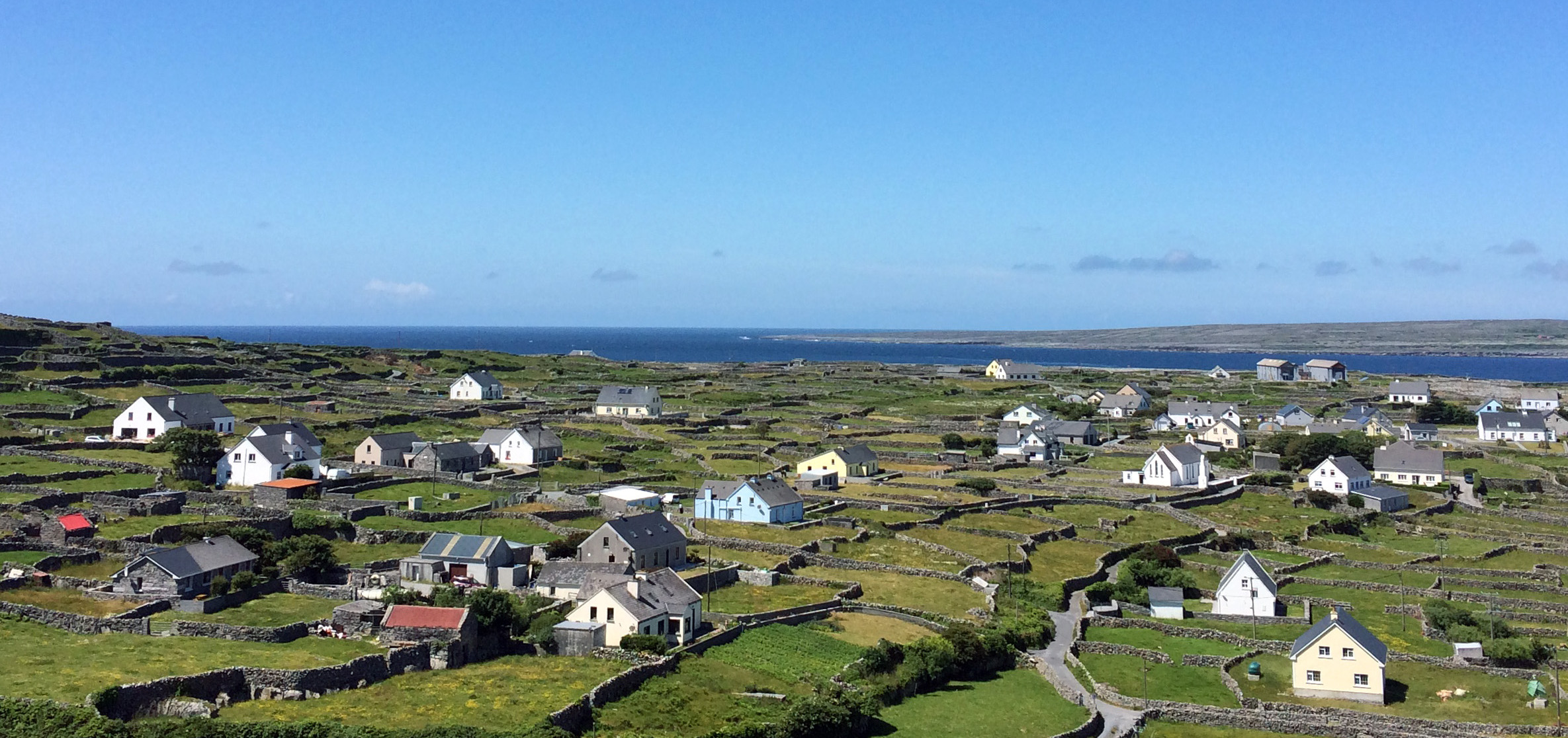Twenty Mile House (Article)
In Maria Semple’s book Where’d you go Bernadette, fictional architect Bernadette Fox creates the ‘Twenty Mile House’. She sets herself a challenge: to build a house where ‘every material used must come from within twenty miles of the building site’.
This idea is one which keeps coming back to me.
I have wondered about its application in Ireland. Twenty miles is roughly the distance from Dundalk to Drogheda, almost the length of Ireland’s smallest county. Could a typical house be built based on the idea of the Twenty Mile House?

To begin with the foundations, there are quarries dispersed throughout the island, although not within twenty miles of every part of the country. The quarries provide concrete for foundations (made from cement, local aggregates, sand, water and admixtures), as well as for stairs and floors. Various types of wall, floor and roof insulation are produced in Ireland, although the raw materials are sourced abroad.
Moving on to the external walls, blocks are produced from concrete, and the mortar from cement, lime, sand and water, with render being made from similar raw materials. For the openings, a number of Irish companies produce concrete window sills and pre-stressed concrete lintels, although pre-stressed strands are imported. Modern houses tend to have large openings, necessitating the use of steel beams. The only steel mill in Ireland closed in 2001, meaning that there is no means of sourcing steel in Ireland, other than from recycled sources. Although scrap metal is processed here, it is then exported to steel mills in other European countries.
Looking at the windows and external doors, there are a number of manufacturers in Ireland, but the materials used aren’t generally sourced here. Part of the processing of aluminium occurs in Co. Limerick, the production of alumina, but this is then exported for further processing before being imported as aluminium, used in window and door frames. Similarly, the majority of hardwood used in doors, door frames, and windows is imported, with only a tiny percentage of Irish hardwood being used. The main glass processing plant in Ireland is in Co. Tipperary, but the raw glass is imported.
Internal walls are either made of metal studs, which predominantly consist of imported steel, or timber studs, made of softwood, about half of which is grown in Irish forests. Their plasterboard lining comprises a gypsum core with additives bonded to paper liners. The same gypsum is used to produce plaster. Gypsum is a mineral mined in Co. Monaghan, with plasterboard and plaster being manufactured in Co. Cavan.
Finally, at roof level, timber roof joists and trusses are manufactured nationally, made of softwood, about half of which is local. Roof tiles can be made of concrete, which is manufactured here, or slate, quarried in Co. Kerry. However, most of the slate used in Ireland is imported from overseas.
This shows that the simple house construction model described above can’t be built from Irish materials alone. That’s without considering heat sources, plumbing , electrics, or any of the mechanical fixings, sealants or membranes that go into a modern home. Even generously allowing 380 odd miles from Malin head to Mizen head, it can’t be done.
The Twenty Mile House represents the ‘shop local’ approach to building , but also the spirit of the idea is tied to sustainability. The embodied energy of a house includes not only the transport of materials to site, but also the sourcing of raw materials and the processes used to manufacture them. Our building regulations increasingly demand homes with low operational carbon emissions, but there’s very little focus on the embodied carbon in the materials used.
There is an opportunity to move closer to the idea of the Twenty Mile House. We build as if our buildings will last forever – embedding steel in concrete – yet knowing that one day they will be demolished. Demolition is relatively swift, but messy. The alternative is deconstruction, the taking apart of a building piece by piece, with many of the elements being reused or recycled. This would mean that materials from surrounding buildings could be used for new construction. The introduction of more transparent product information, such as Environmental Product Declarations, means that manufacturers are being encouraged to genuinely reduce their environmental impact.
The reintroduction of lost industries could be looked at as a means to reduce the transport distance of raw materials. Although quarrying is unsustainable in the long term, there are a significant number of local quarries, shortening the distance materials travel to site. The development of Irish forestry would create a renewable source of both hardwoods and softwoods to supply Irish sawmills. The local availability of timber or limestone might dictate the materials used in a house.
Frank Keohane, in Irish Period Houses, refers to ‘the lime, sand, stone and brick forming the wall’s “being”, taken from the locality and represent [ing] the local geology’. They’re ‘of the place’. Dúchasach is the Irish word, which seems a much richer term, having multiple translations as native, natural, vernacular, and inherent. Our houses should seem like they have been built up from where they stand, using sustainable materials, that could, one day, be part of something new.
This article was featured in the RIAI Architecture Ireland Website.